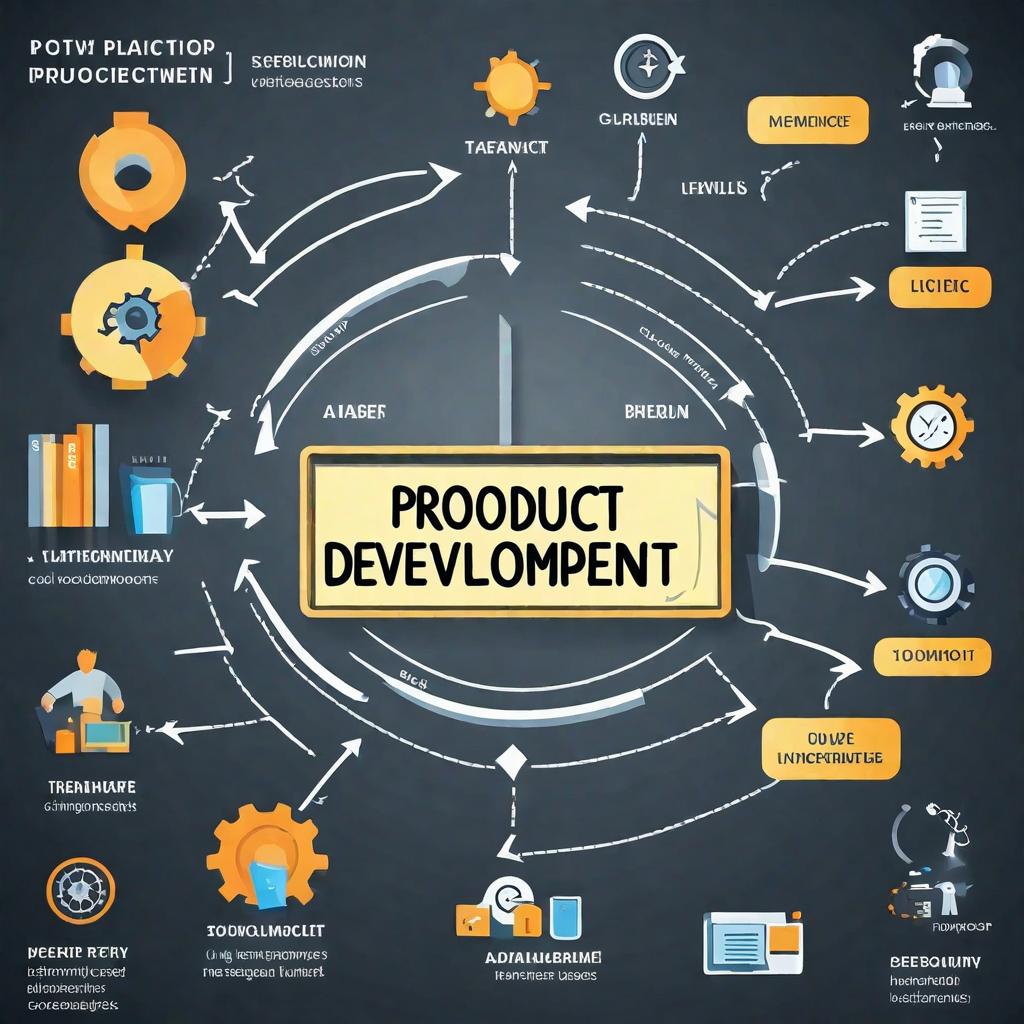Introduction
Welcome to my comprehensive guide to understanding the role of a Product Manager. In today’s fast-paced and competitive business landscape, effective product management plays a pivotal role in driving organizational success. In this blog post, I will delve into the key responsibilities of a Product Manager, explore the evolving landscape of product management, and highlight the importance of this role in organizations. Join me on this journey as I uncover the intricacies of product management and how it positively impacts businesses.
Defining the Role of Product Managers
As organizations strive to deliver innovative and valuable products to the market, the role of a Product Manager becomes increasingly vital. Product Managers are responsible for orchestrating the entire lifecycle of a product, from its inception to launch and beyond. Let’s explore the various responsibilities that define this role in more detail.
Identifying and Analyzing Market Needs

A successful product begins with a deep understanding of market needs. Product Managers need to conduct extensive market research to identify gaps, demands, and trends. Through this research, they gain valuable insights into customer preferences, pain points, and behavior. By leveraging these insights, Product Managers can develop products that cater to these needs, resulting in customer satisfaction and business success.
- Conducting Extensive Market Research
Market research allows Product Managers to gather and analyze data on customer demographics, market size, and potential competitors. By conducting surveys, interviews, and focus groups, they gain valuable insights into customer preferences, pain points, and unmet needs. This information serves as a foundation for developing products that address these gaps and resonate with target audiences.
- Collecting and Analyzing Customer Feedback
To ensure products meet customer expectations, Product Managers actively collect and analyze customer feedback. Whether through customer support channels, online reviews, or feedback forms, Product Managers listen to customers and leverage their insights to improve existing products or develop new ones. This customer-centric approach helps organizations stay ahead of the competition and build strong relationships with their customer base.
- Monitoring Market Trends and Competition
In the dynamic business landscape, staying updated with market trends and competition is crucial. Product Managers need to continuously monitor industry trends, technological advancements, and competitor strategies. This helps them identify new opportunities, adapt their product strategies, and maintain a competitive advantage. By keeping a finger on the pulse of the market, Product Managers position their organizations for success.
Developing Product Strategy

Once market needs are identified, Product Managers play a critical role in developing a comprehensive product strategy. This involves setting clear goals, defining target market segments, and crafting competitive product roadmaps.
- Setting Clear Product Goals and Objectives
Product Managers define clear and measurable goals for their products. These goals align with the organizational objectives and help create a roadmap for success. By setting specific, attainable, and time-bound goals, Product Managers provide a sense of direction and purpose for the entire product team.
- Defining Target Market Segments
Understanding the target market is crucial for crafting successful products. Product Managers segment the market based on various factors such as demographics, psychographics, and customer behavior. This segmentation allows them to tailor products and marketing strategies to specific groups, maximizing customer engagement and adoption.
- Crafting Competitive Product Roadmaps
Product roadmaps guide the development and evolution of a product over time. Product Managers work closely with stakeholders to define the features, functionalities, and timelines for product releases. By considering market needs, customer feedback, and business objectives, they ensure that the product roadmap aligns with strategic goals and delivers value to customers.
Collaborating with Cross-Functional Teams

Product Managers act as the bridge between different departments within an organization, fostering collaboration and effective communication. They work closely with cross-functional teams, including product, engineering, and design, to ensure successful product development.
- Facilitating Communication among Product, Engineering, and Design Teams
Effective communication is essential for delivering seamless product experiences. Product Managers facilitate open communication channels between product, engineering, and design teams. Through regular meetings, updates, and brainstorming sessions, they ensure that all teams are aligned, informed, and working towards common goals.
- Prioritizing Features and Requirements
With inputs from various stakeholders, Product Managers prioritize features and requirements based on market needs, technical feasibility, and business objectives. They make informed decisions about what should be included in product releases and what can be deferred for future iterations. By carefully managing priorities, Product Managers optimize resources, minimize delays, and deliver value to customers.
- Balancing Technical Feasibility with Customer Demands
Product Managers understand the technical feasibility of product ideas. They work closely with engineering teams to evaluate the practicality of implementing specific features or functionalities. By balancing customer demands with technical constraints, Product Managers ensure that the product remains viable, scalable, and aligned with organizational capabilities.
Managing Product Development Lifecycle

Product Managers take charge of overseeing the entire product development lifecycle. They ensure efficient collaboration, timely delivery, and high-quality products through effective project management practices.
- Overseeing Product Development Processes
Product Managers oversee the end-to-end product development processes. They work closely with development teams to define project milestones, allocate resources, and manage timelines. By monitoring progress, addressing bottlenecks, and facilitating cross-departmental coordination, they ensure smooth execution of product development plans.
- Conducting Agile Project Management
Agile project management methodologies enhance flexibility, productivity, and collaboration within product teams. Product Managers embrace agile principles to adapt and respond to changing market needs quickly. By breaking down product development into small iterations, conducting regular sprints, and refining processes, they create a conducive environment for innovation and continuous improvement.
- Ensuring Timely Delivery and High-Quality Products
Timely product delivery is crucial to maintain a competitive edge and meet customer expectations. Product Managers work closely with development teams to ensure projects adhere to timelines and milestones. They conduct regular quality checks, perform user acceptance testing, and collaborate with QA teams to ensure high-quality products that meet customer needs.
Launching and Iterating Products

The role of Product Managers extends beyond product development. They play an active role in product launch strategies, coordination, and continuous iteration to maximize product success in the market.
- Designing Effective Go-to-Market Strategies
Product Managers collaborate with marketing and sales teams to design comprehensive go-to-market strategies. This involves identifying target channels, positioning the product in the market, and creating compelling marketing campaigns. By aligning product launches with marketing efforts, Product Managers drive product awareness, adoption, and revenue growth.
- Coordinating Product Launch Activities
Successful product launches require proper coordination across various teams and departments. Product Managers ensure that all stakeholders are aligned, resources are allocated efficiently, and necessary support is provided. They coordinate activities such as product training, sales enablement, and customer communication to maximize the impact of the launch.
- Tracking Product Performance and Iterating based on Customer Feedback
Once a product is launched, Product Managers closely monitor its performance and collect customer feedback. They analyze key performance indicators and gather insights to identify areas of improvement and potential iterations. By continuously iterating based on customer feedback, Product Managers ensure that products remain relevant, competitive, and continuously deliver value to customers.
Conclusion
In conclusion, Product Managers play a crucial role in driving business success through effective product management. From identifying market needs and developing strategies to collaborating with cross-functional teams and managing the product life cycle, their responsibilities are diverse and impactful. By embracing their role as orchestrators of product success, Product Managers drive innovation, customer satisfaction, and revenue growth. Through their dedication and expertise, organizations can navigate the complex landscape of product management with confidence and achieve their business objectives.
Remember, a strong product manager is an invaluable asset to any organization seeking to thrive in today’s competitive market. So, if you’re passionate about shaping products and driving success, consider a career in product management and unlock your potential to make a lasting impact.


